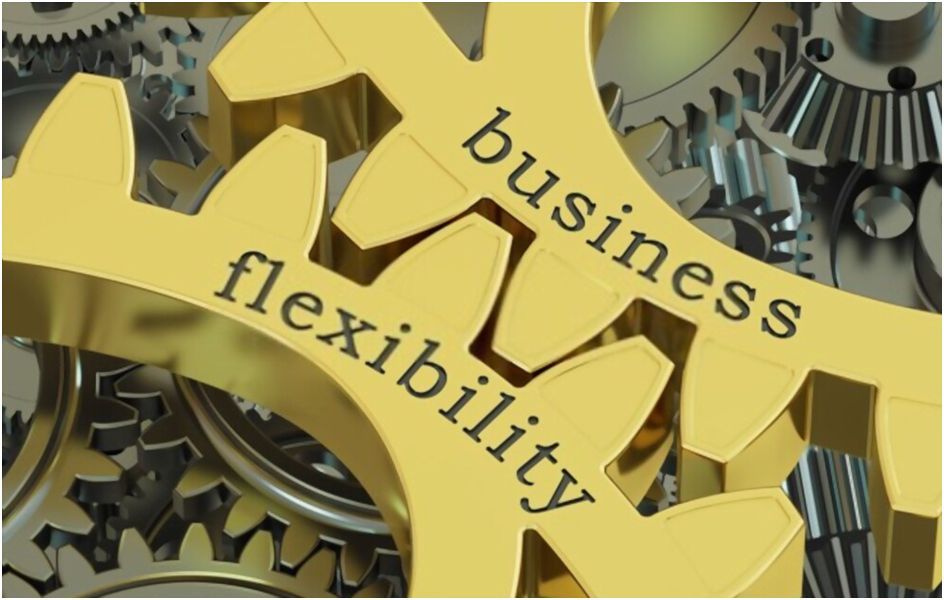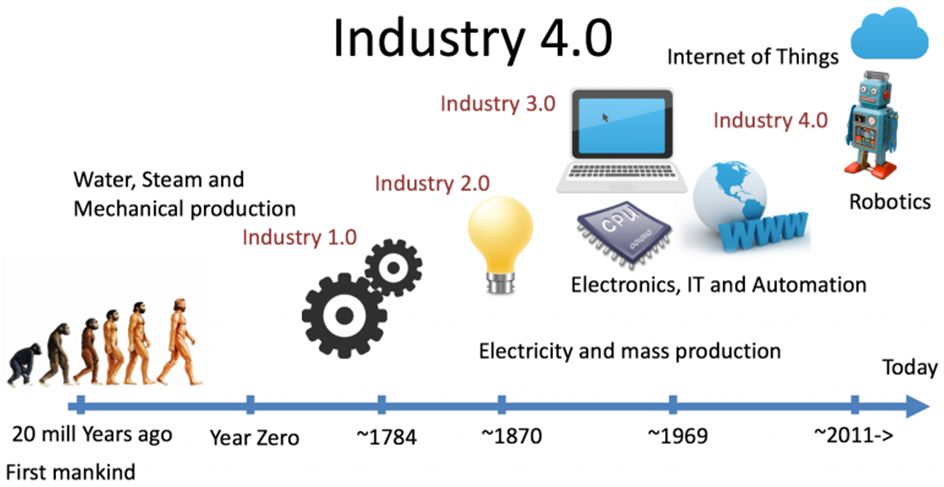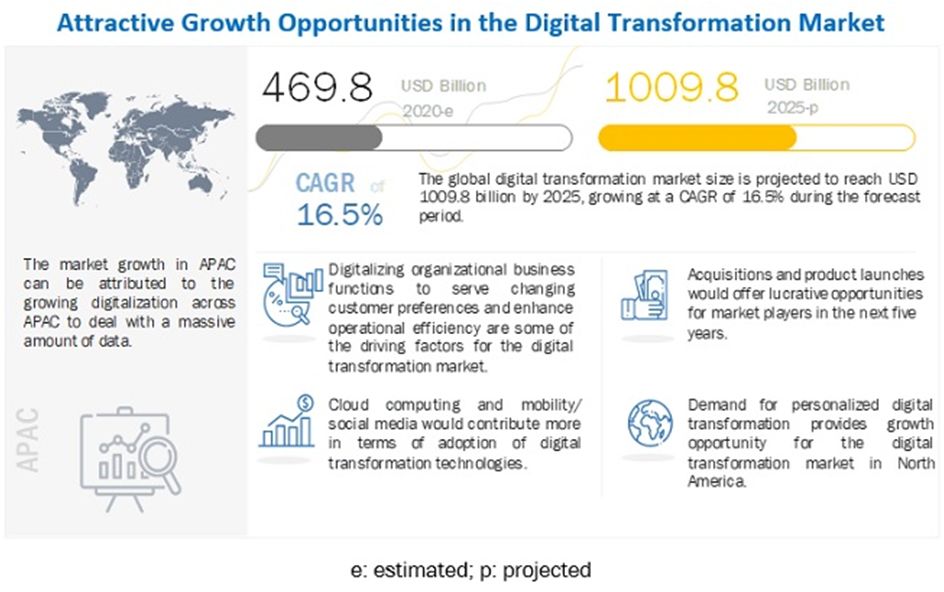
(source)
As new technology emerges, we can expect its influence on how people live, play, and conduct business to continue. Today’s fourth industrial revolution plays a vital role in determining how organizations optimize themselves to compete more effectively and helping to predict where their paths will take them in the digital future.
In many areas of our lives, technology plays an important role. For instance, it has enabled us to access information faster and faster, thus transforming how we consume and interact with data. This technological revolution is increasingly affecting the business environment, and automated and connected systems have been used more and more in industrial processes over time.
Perhaps, it’s all too easy for businesses to get caught up in thinking about trendy gadgets and significant innovations when they think about digital transformation or industrial revolution 4.0. And we understand why.
Major global business forums and the innovation centers of Silicon Valley and conferences such as Mobile World Congress, terms like AI (artificial intelligence) and IoT (Internet of Things), Machine Learning, etc., are woven into the discourse with the same frequency.
But is it enough? Do businesses take advantage of smart technology? Will IR 4.0 become a determining factor for the future of the business? There are too many questions, and this article will answer your questions by defining the meaning of IR 4.0, how businesses can prepare themselves and what obstacles they are facing. So let’s get started.
Table of Contents
What Stands for the Fourth Industrial Revolution?

Source: Asian Productivity Organization
The business world is buzzing with talk of the Fourth Industrial Revolution. In what ways does it affect your business, and what exactly is the Fourth Industrial Revolution?
We must recognize the types of differences between the Fourth Industrial Revolution and the three prior ones to understand it in a better way. With steam and water power first coming into existence, advanced computerization and technology are poised to revolutionize nearly every industry in every country at an unprecedented pace. How will this benefit the company?
Is there an opportunity to seize? Let’s go through the definition.
IR 4.0 is about far more than just connecting products and machines via the Internet.
To put it simply,
4.0 is a new era of technology that unfolds in which computers are connected and communicate to make decisions without human intervention. In order to make Industry 4.0 a reality, cyber-physical systems, the Internet of Things, and the Internet of Systems must be incorporated.
Organizing, managing, and approaching business in a new way is a paradigm shift. Our society is already experiencing the consequences of Industry 4.0. Not only are companies investing in this concept, but it is also becoming increasingly popular among governments across the globe, and they are pouring a lot of money into this sector.
Many advanced organizations have started, or are close to the beginning, to use artificial intelligence, the Internet of Things, and M2M correspondence in their business operations. The following are some of the rewards that Industry 4.0 is bringing to organizations in their particular segments:
- Requirement for the unskilled labor may decrease
- Higher automation across businesses
- Smother business process
- Smart production systems
- Eliminate risks associated with the manufacturing process
Industrie 4.0 is a qualitative leap in organizing and controlling the product’s life cycle throughout its manufacture and delivery. According to Deloitte University Press’ video, this creates a paradigm shift for industries.
Now you know the basics of Industrial revolution 4.0, but how do businesses prepare for this drastic change? Don’t worry; we are going to explain it in our next section.
How do Businesses prepare for Industry 4.0?

Source: MarketsAndMarkets
Interconnected systems are the key to Industry 4.0, as we’ve seen in the previous section and its meaning. Thus, data from these systems can be shared across them in order to gain meaningful insight. Therefore, entrepreneurs are in a position to make the most informed decisions for their enterprises (increase automation and improving operations) when looking towards a more lean environment.
You may be wondering what steps you need to take to start implementing 4.0 technologies to transition to the organization finally. Here, we are going to explain the key steps towards transitioning to Industry 4.0 technologies to make your business smart and agile to survive in this saturated market.
Evaluate Your Business Model
A digital-first world does not require all business models to hold up. Being reactive about your business will result in you becoming a relic of the past all too late. Take the example of Blockbuster. It used to employ ten thousand people and earn billions of dollars. Since declaring bankruptcy in 2010, the company has been reduced to one store and fewer employees.
The industrial revolution is all about technology and its adoption smartly; we agree that you should not paint a gloomy picture; instead, you should see the real world. Understanding your business model’s viability in 5, 10, or 20 years is a crucial step toward preparing for the industrial revolution.
Examine your competitors, both direct and indirect. When did you last see a hyperlocal industry move its services to the cloud? Is your business model subject to slight variations that seem insignificant now but may become part of the industry as a whole in the future? If yes, go ahead.
Here you can see how retails and restaurant business owners suddenly pivoted their conventional business models to the delivery platform because they know even if the pandemic ends, people will find it comfortable to order products online, to prosper in coming years, they have transformed their business model today.
Identify the Pain Points and choose a Vendor
You should document all the pain points that you hope the new vendor and technology can address as a second step. Partnering with a risk-reduction vendor is of great importance to the company. How can you ask yourself important questions? What companies are they working with? Is it possible for them to tailor solutions to your needs? Do they offer consistent technical support from initial assessments to delivery to ongoing support?
Carrying forward the above example, if you want to start an online delivery business, list down what kinds of issues you are facing right now. It could be anything, including automation, inventory, online ordering, real-time data tracking, etc. Once you know the issues you are facing, it would be easy to adopt and implement solutions.
The right technology will provide the right competitive advantage for you and other manufacturers while reducing risk.
Understand Technology
Often, managers don’t come from a technological background in leadership. Besides, innovation in technology keeps impacting businesses and individuals each passing day. The 4IR is here now, and we have the 5IR on our doorstep, so leaders need to have a basic understanding of technology.
Indeed, technology has the potential to solve many issues, but you can’t blindly trust it. Aside from knowing how it works, it also includes knowing the terminology and vocabulary of technology. The importance of developing an understanding of the non-technical aspects of technology and information systems can’t be overstated to help you make better use of technology today and in the future.
It is not necessary to be comfortable using technology to lead, but leaders of tomorrow need to understand it so they can direct their teams. Consider how on-demand business solutions leverage technology and address people’s most burning issue, “time,” with intelligent solutions.
Fortunately, wide access to the Internet has made it possible. Various online short courses are available in digital technologies such as cybersecurity, digital tools, automation, and much more. Learn the basics, then move up from there.
Execution
This is the last step but holds much importance. Despite the fast pace of business, make sure not to rush the implementation of your initiative. Take time, choose proper technology tools, train employees and then jump on the bandwagon of the fourth industrial revolution.
We should be concerned about the fact that 70 percent of digital transformation initiatives fail to achieve their intended goals. This failure can be attributed to many factors, according to the study cited above. Employees are under-engaged, accountability is lacking, collaboration is poor, management is underinvested, etc.
These are various indications of poor execution. Instead, spend some time on research and make yourself prepared to bear all the consequences the new technology will bring to your business.
Biggest Barriers to Industrial Revolution 4.0
We are walking on the path of transformation as we move from traditional pen-paper to excel. This journey is not easy, given the fast-paced world we live in and the gears we have to match. Following are the major obstacles every CMO faces,
- The changing customer experience
- Employee pushback
- Poor research or analytics
- Organizational mindset
- Resistance to change by suppliers and customers
- Inadequate resources
It is simple to understand and be aware of technological changes within the global market, but how can we implement and embrace those changes? The process of innovating new ideas is not easy, especially in large organizations where hierarchy is a possible barrier.
Just think of what Uber has changed in transportation and UberEats in the food delivery market. Taking advantage of technology and digital changes, both companies disrupt older and outdated industries.
Indeed, change doesn’t happen overnight. It’s widely thought of as an expensive affair, but it doesn’t have to be. Everyone involved in digital transformation struggles with overwhelm – including those who use support systems to cope. This process is widely perceived to be expensive, but it does not need to decimate your budget.
IR 4.0 is Shaping the Future
Humans do not have control over either technology or the disruption that comes with it. Whether as citizens, consumers, or investors, all of us are involved in shaping its evolution. In order to handle these dramatic, sudden shifts, leaders also need to remain flexible, inventive, and agile.
Adapting to changes and embracing them is the most important tool for any professional. This is a challenge, and we must rise to it and succeed during the new industrial revolution.

Riddhi Ganatra is an online marketing consultant and outreach expert at Viss Beauty who loves to write and review fashion and beauty products. She spent more than three years as content creator covering topics like online marketing, technology, motherhood, lifestyle, beauty, and more.